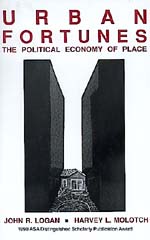This week we’re up to Bourdieu’s On Television. In one class we talked about unveiling the logics of debate and discourse and I used the now-classic example of Jon Stewart going on CNN’s Crossfire and doing everything shy of dismantling the risers underneath the audience. I thought that his ‘I’m just a comedian, but you’re hurting America’ was weak tea, but they packed it in after the gig was up. When a Vice President of the Associated Press threatens a Nashville radio station for using their content (which is to say linking to the AP’s own YouTube Channel–that encludes the codes to embed the videos with–that they apparently didn’t know they had) only to find out that the radio station is actually an affiliate you really know that the unveiling of the mechanisms of cultural production can be a shock to the leviathans themselves. (See a video discussion of it here.)
The brouhaha this weekend was #amazonfail, in which a supposed filing glitch/algorithm led to hundreds, even thousands of titles to be labeled ‘adult’ and therefore, go unranked. Mary Hodder compares how one book (The Mayor of Castro Street: The Life and Times of Harvey Milk) lost its sales ranking while another (A Parent’s Guide to Homosexuality) kept it. Amazon claims that it was a ‘glitch’ (see their statement here), but Hodder says that authors (like Craig Seymour) were notified months ago that they had lost their ranking for merely including positive content on LGBT themes/content, and notes that the first five books that come up in a search for ‘homosexuality’ are all anti-gay. Clay Shirky has a slightly divergent opinion. (Thanks KB!)




 In preparing to talk about representations of reality, and thinking about the
In preparing to talk about representations of reality, and thinking about the 
